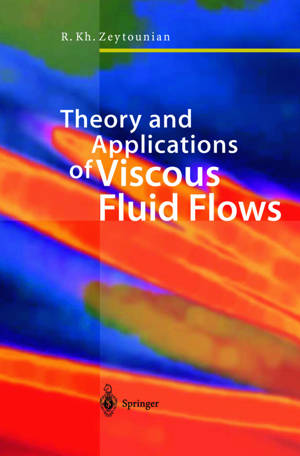
- Afhalen na 1 uur in een winkel met voorraad
- Gratis thuislevering in België vanaf € 30
- Ruim aanbod met 7 miljoen producten
- Afhalen na 1 uur in een winkel met voorraad
- Gratis thuislevering in België vanaf € 30
- Ruim aanbod met 7 miljoen producten
Zoeken
€ 181,95
+ 363 punten
Omschrijving
This book is the natural sequel to the study of nonviscous fluid flows pre- sented in our recent book entitled "Theory and Applications of Nonviscous Fluid Flows" and published in 2002 by the Physics Editorial Department of Springer-Verlag (ISBN 3-540-41412-6 Springer-Verlag, Berlin, Heidelberg, New York). The physical concept of viscosity (for so-called "real fluids") is associated both incompressible and compressible fluids. Consequently, we have with a vast field of theoretical study and applications from which any subsection could have itself provided an area for a single book. It was, however, decided to attempt aglobaI study so that each chapter serves as an introduction to more specialized study, and the book as a whole presents a necessary broad foundation for furt her study in depth. Consequently, this volume contains many more pages than my preceding book devoted to nonviscous fluid flows and a large number (80) of figures. There are three main models for the study of viscous fluid flows: First, the model linked with viscous incompressible fluid flows, the so-called (dynamic) Navier model, governing linearly viscous divergenceless and homogeneous fluid flows. The second is the sü-called Navier-Stokes model (NS) which is linked to compressible, linearly viscous and isentropic equations für a polytropic viscous gas. The third is the so-called Navier-Stokes-Fourier model (NSF) that gov- erns the motion of a compressible, linearly viscous, heat-conducting gas.
Specificaties
Betrokkenen
- Auteur(s):
- Uitgeverij:
Inhoud
- Aantal bladzijden:
- 488
- Taal:
- Engels
Eigenschappen
- Productcode (EAN):
- 9783540440130
- Verschijningsdatum:
- 25/08/2003
- Uitvoering:
- Hardcover
- Formaat:
- Genaaid
- Afmetingen:
- 156 mm x 234 mm
- Gewicht:
- 884 g

Alleen bij Standaard Boekhandel
+ 363 punten op je klantenkaart van Standaard Boekhandel
Beoordelingen
We publiceren alleen reviews die voldoen aan de voorwaarden voor reviews. Bekijk onze voorwaarden voor reviews.








